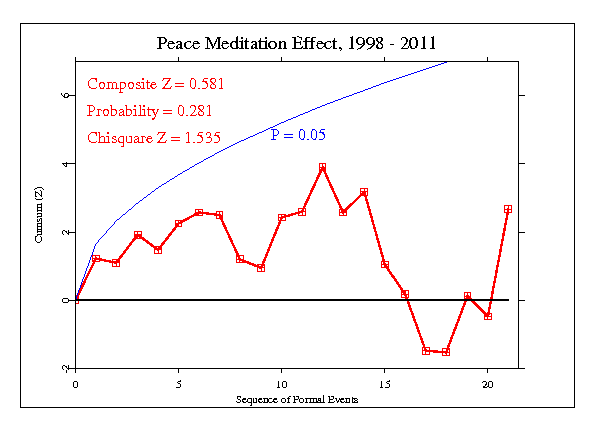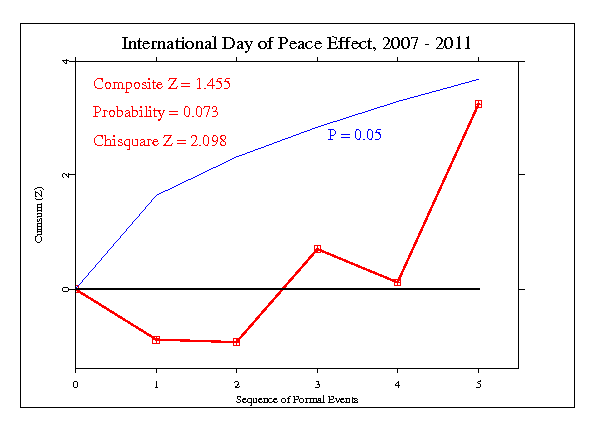|
One of the special categories we regularly explore is the
effect of organized events that recruit as many people as
possible to do synchronized prayers or meditations which are
intended to have a positive effect on the social climate. I
think the number of these has been increasing over the time the
GCP has been running, but we have noted them since 1998. They
vary greatly in the quality or effectiveness of the
organization, and hence also almost certainly in the number of
people who participate. But for the sake of a preliminary look
at this category of social activism, we can put together all
of the examples we have up to 2011. There are 21 of these, and
the composite results is shown in the first figure.
Visually it is obvious that the events vary greatly in the size
and even the direction of the effect, and indeed the Chisquare
Z that measures this variance is substantial at 1.535, though
not significant. The composite (or average) Z-score (0.581) is slightly
positive, but not impressive. It is, however a bit larger than
the average effect size (~0.33) for the GCP database as a whole.

When we separate out the series of events on the International
Day of Peace (September 21), the picture should be simpler
because this is a yearly official celebration rather than
an ad hoc or unique event. However, we see again the
high variability (in this case it is significant at Z = 2.098
and p = 0.018), and a fairly substantial positive deviation.
Both are driven primarily by the most recent International Day
of Peace, which had an effect size greater than 3 sigma.
I received an unusually high volume of suggestions
that the day should be a GCP event, and in addition, many suggestions to
monitor other kinds of social movements and gatherings focused
on that date.

It is important to keep in mind that we have only a tiny
statistical effect, so that it is always hard to distinguish
signal from noise. This means that every "success" might be
largely driven by chance, and every "null" might include a real
signal overwhelmed by noise. In the long run, a real effect can
be identified only by patiently accumulating replications of
similar analyses.
|